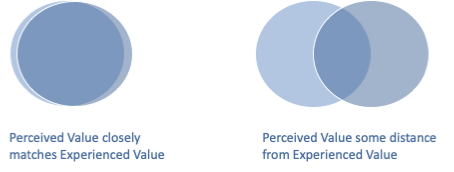Products must be designed to meet your organisation’s Enterprise Architecture principles. Otherwise well-meant activities will result in products that cause a drag on the corporate ability to support them, and the wins from delivering value to your customers will be diluted.
Enterprise Architecture Principles
For greatest impact, and to best support digital transformation, the following principles should be adhered to:
Business Operation – corporate Products and Services are developed in alignment with the Enterprise Architecture and the company’s investment strategy must support Opex funding for the development and ongoing enhancement and support of any new capability. All externally provided services must align with company architecture.
Application Design – there must be technological independence to minimise the impact of technology change on business operations – products must be built from services that are loosely coupled, modular and reusable.
Data – must be treated as an asset, and therefore owned and managed; be held once in a master file; a published vocabulary is used so that definitions are comprehensible and accessible by all users; be secure in transit and at-rest, and be protected from unauthorised use and disclosure.
Infrastructure – Aim for serverless computing - a cloud-computing execution model in which the cloud provider runs the server and corporate networks, and dynamically manages machine resources. Aim to remove technical debt.
Security – Data and systems are protected based on the CIA triad - Confidentiality, Integrity and Availability. Plus, zero trust security which requires strict identity verification for every person and device trying to access resources on a private network, regardless of whether they are sitting within or outside of the network perimeter. Implement, full - and tested - business continuity.
Compliance – comply with all internal and external regulatory and legal requirements.
Your Products and their Value
Assuming that your products (and services) are architected, then in order to build products which are particularly relevant to your target customers, it may be helpful to consider the following 3-step value flow ….

We’ll discuss each further...
Understand your Value
Many technology companies get caught up in the features and don’t really know why people buy their product.
To build a successful product-aware business, you'll need to understand the four main outcomes that motivate the customer's purchase of your product.
- Functional Outcome: the core utility that customers want to achieve.
- Emotional Outcome: how customers want to feel, or avoid feeling, as a result of the core functional outcome.
- Social Outcome: how customers want to be perceived by others by using your product.
- Value Outcome: how the customer perceives the ‘surplus’ beyond the price, which is the result of the way that a company connects with its intended audience.
The more in tune you are with what your customer wants, the easier it is going to be for you to communicate the value of your product to your buyer and to eventually deliver on your promise.
Communicate the perceived value of your product
Communicating your value is at the crux of a product-led growth strategy. Sales-led companies love to hide their pricing behind closed doors, asking potential buyers to request the price.
Product-led companies eliminate this unnecessary friction with up-front pricing.
In a product-led business, your revenue and customer acquisition model are married together. In a sales-led business, the revenue and customer acquisition models are separated.
A sales-led business can bank on relationships to sell large contracts.
In a product-led company, your customer acquisition model is built around your product. Clarity of purpose, value and Why is essential to revenue generation.
The more in tune you are with what your customer wants, the easier it is going to be for you to communicate the value to your buyer and eventually deliver on your promise.
Deliver on what you promise
What we promise in our marketing and sales is the perceived value. What we deliver in our product is the experienced value.

Ideally, the perceived value aligns with the experienced value.
But my company sells services….
The process of selling services is very similar to selling products.
The main difference is that a product business sells physical, tangible objects, whereas a service business provides value through intangible skills, expertise and time.
Unless you are working in a transactional industry, it can be more difficult to describe services than products. Especially high-value or professional services. The principles of sales remain the same though. You need to explain the benefit of your service as well as the tangible outcome, and you need to take care that your client’s perceived value closely matches their experienced value. Services need more effort putting into building personal relationships with decision makers that show that you understand their problem or opportunity and can tailor your service
There are three concepts that a buyer or seller of services must keep in mind:
- Minimizing uncertainty — A professional service must make a direct contribution to the reduction of the uncertainties involved in managing a business. The proper assessment of a service, unlike tangible goods, usually must take into account the impact of its performance on the client’s business.
- Understanding problems — A professional service must come directly to grips with a fundamental problem of the business purchasing that service. The successful performance of the service, far more so than the successful production of a product, depends on an understanding of the client’s business.
- Buying the professional — A professional service can only be purchased meaningfully from someone who is capable of rendering the service. Selling ability and personality by themselves are meaningless.
Drag may overcome thrust
Driven by innovation, competition and/or acquisition, the design of products (and services) becomes more complicated and they are introduced to the market at a quicker pace, each needing to accommodate the subtly different needs of adjacent market sectors.
You need to be careful to ensure that your products and services are properly architected so that you have an appropriate and complete product set, you avoid a high corporate maintenance on irrelevant products and mitigate an increased risk of regulatory non-compliance; and you need to stay focused on the value that you are delivering to your customers.
Next: A Product-Led Organisational Structure
The key to creating a customer-centric business is for your company to organise itself on a cross-functional basis, rather than the traditional hierarchical structure. In A Product-Aware Organisational Structure we propose that it's time to pivot the organisation and place Enterprise Architecture, Product Management and Engineering at the heart of the company.


